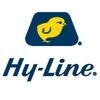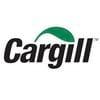I. INTRODUCTION
Contamination of eggshells by Salmonella Typhimurium is a major public health and food safety issue to the Australian poultry industry. In Australia, the majority of the egg and egg related foodborne outbreaks are caused by S. Typhimurium (The OzFoodNet Working group 2015).
Biofilm formation is one of the survival mechanisms utilised by Salmonella spp. against physical and chemical stress factors in the environment (Steenackers et al. 2012). A biofilm is a community of cells attached to biotic and abiotic surfaces in a self-produced extracellular matrix component (Donlan and Costerton 2002). Cells in a biofilm exhibit a greater resistance to antimicrobials and environmental stressors than their planktonic counterparts (Steenackers et al. 2012). Hence, the eradication of biofilms in both domestic and industrial settings is difficult. Previous studies have demonstrated that susceptibility of biofilm cells to commonly used disinfectants was associated with the age of the biofilm (Shen et al. 2011).
Biofilm formation contributes to the persistence of Salmonella in the food processing environment and detachment of biofilm cells from surface could lead to cross contamination of other food products, compromising the food quality (Møretrø et al. 2012). The objectives of this study were to test the susceptibility of 24 and 48 h old biofilms formed on a plastic surface to different concentrations of commercial disinfectants following 30 s exposure. All commercial disinfectants tested in this study are currently being used in the Australian poultry industry. In this study, each product was tested at the user recommended concentration or twice the recommended concentration against S. Typhimurium biofilms.
II. MATERIALS AND METHODS
Twelve isolates of S. Typhimurium isolated during epidemiological studies were used for biofilm formation. The stock culture of S. Typhimurium was streaked onto XLD agar plates and incubated at 37 °C for 24 h for the preparation of biofilm inoculum (Pande et al. 2016). The MBEC™ Assay system (Innovotech Inc. Edmonton, Canada) was used to form S. Typhimurium biofilms. Biofilms were formed by adding 200 µL of S. Typhimurium inoculum in each well of MBEC plate and plates were incubated at 22 ± 2°C for 24 or 48 h on a rocking platform shaker (ROCKit, Select Bio-Products, NJ, USA). Three commercial disinfectants (Table 1) commonly used in the Australian poultry industry were tested in this study against S. Typhimurium biofilms according to the manufacturer procedural manual version 1.1 (Innovotech Inc. Edmonton, Canada), at 1x or 2x the recommended dose. Products A & C were tested at 0.5 or 1.0%, and product B was tested at 0.4 or 0.8%. Freshly prepared working solutions of each commercial disinfectant were prepared from stock solution and used immediately on the challenge day. Positive and negative controls were also used in the experiment. After biofilm establishment, peg lids were aseptically removed at 24 or 48 h and rinsed with 0.9% normal saline solution (NSS) for 1 min in 96 well flat bottom microtiter plates (Nunc™, Thermo Scientific, Australia). For each disinfectant studied, the peg lids were placed in the disinfectant plate and exposed for 30 s. Sterile NSS was used as a negative control and S. Typhimurium biofilm without disinfectant was used as a positive control in the disinfectant challenge plate.
After 30 s exposure, the peg lids were rinsed two times (one min each rinse) in NSS, and then immersed in a neutralising broth (Difco™ Neutralizing Broth) for one min. The peg lids were then aseptically transferred to a 96 well plate containing LB broth. The plates were sonicated at high speed for 5 min (Model 160TD, Soniclean Pty Ltd, Australia) and number of viable cells was enumerated by plate count method. In this study, two biological replicates of each S. Typhimurium isolate were used to test the activity of each disinfectant against biofilms. Statistical analysis was performed using GraphPad Prism version 6 Software, Inc. CA, USA. Mean recovery of viable cells from control and disinfectant treated groups, at different concentrations and days of biofilm formation, were analysed by two-way ANOVA followed by Tukey’s multiple comparisons test. Data were expressed as mean log CFU peg-1 ± standard error of mean (SEM). P values < 0.05 were considered statistically significant.
III. RESULTS
In comparison to the positive control (7.05 log CFU peg-1), product A significantly reduced the viable cell count to 4.38 and 4.43 log CFU peg-1 in the 24 h biofilms at 0.5 and 1% concentrations, respectively. Similarly, in comparison with the positive control (7.02 ± 0.09 log CFU peg-1), product A significantly reduced the viable cell count to 2.72 and 3.38 log CFU peg-1 in 48 h biofilms at 0.5 and 1% concentration, respectively. However, no significant difference was observed between the two concentrations in the recovery of viable biofilm cells after 24 and 48 h of biofilm formation. The sensitivity of 48 h biofilm cells to product A at 0.5% was significantly reduced (P=0.0002) and more cells were recovered from 48 h biofilms (4.29±0.19 log CFU peg-1) than the 24 h biofilm (2.67±0.34 log CFU peg-1). There was a trend (P=0.053) towards decrease in efficacy of product A between 24 (2.63±0.29 log CFU peg-1) and 48 h (3.65±0.26 log CFU peg-1) biofilms at the 1% concentration.
Compared to the positive control (7.05 log CFU peg-1), product B tended to reduce the viable cell counts to 4.35 and 4.57 log CFU peg-1 in the 24 h biofilms at 0.4% and 0.8% concentrations, respectively. In comparison with the positive control (7.02 ± 0.09 log CFU peg-1), product B significantly reduced the viable cell count to 1.86 and 2.79 log CFU peg-1 in 48 h biofilms at 0.4 and 0.8% concentrations, respectively. However, no significant difference was observed between the two concentrations in the recovery of viable biofilm cells after 48 h of biofilm formation. The sensitivity of 48 h biofilm cells to product B at 0.4 % was significantly reduced (P=0.0001) and more cells were recovered from 48 h biofilms (5.16±0.22 log CFU peg-1) than the 24 h biofilm (2.70±0.41 log CFU peg-1). Similarly, more cells were recovered from 48 h biofilms (4.23±0.22 log CFU peg-1) than the 24 h biofilms (2.48±0.38 log CFU peg-1) when treated with the 0.8% concentration of product B.
In comparison with the positive control (7.05 log CFU peg-1), product C at 0.5% and 1% concentrations significantly reduced the viable count to 4.95 and 4.92 log CFU peg-1 for the 24 h biofilms, respectively. However, no significant difference in the recovery of viable biofilms cells after 24 h was observed between 0.5 and 1% concentrations. In comparison with the positive control (7.02 log CFU peg-1), product C significantly reduced the viable cell count to 1.91 and 2.24 log CFU peg-1 in 48 h biofilms at 0.5 and 1% concentrations, respectively. However, no significant difference was observed between the two concentrations in the recovery of viable biofilm cells after 48 h of biofilm formation.
There was significant difference in the resistance to product C at all concentrations between biofilm ages. The sensitivity of 48 h biofilm cells to product C at 0.5% was significantly reduced (P=0.0001) and more cells were recovered from 48 h biofilms (5.11±0.11 log CFU peg-1) than the 24 h biofilms (2.10±0.40 log CFU peg-1). Similarly, more cells were recovered from 48 h biofilms (4.78±0.09 log CFU peg-1) than the 24 h biofilms (2.13±0.34 log CFU peg-1) when treated with a 1% concentration of product C.
Table 1 - Details of commercial disinfectants used in the study.
IV. DISCUSSION
The three commercial disinfectants (Products A, B and C) tested in this experiment significantly reduced viable biofilm cells. However, none of the products completely eliminated the biofilm cells. The effects of disinfectants are highly concentration-dependent (Russell and McDonnell 2000), and it has been shown that high concentrations of disinfectants were able to reduce more viable cells from biofilms, or even demonstrated 100% reduction in viable cells (Møretrø et al. 2009). In contrast, in this study, even at twice the recommended user concentration, complete elimination of biofilm cells was not achieved by any of the products. Product A, a sodium hypochlorite based compound, has already been tested with variable effects as a disinfectant against biofilms (Wong et al. 2010). Product A was effective in reducing viable biofilm cells at both 0.5 and 1% concentrations; however it was not able to eliminate all viable cells. However, previous studies have shown that sodium hypochlorite, when used at a concentration of 5% (m/v) for 1 and 5 min, was able to completely remove viable cells from 5 or 7 day (d) old Salmonella biofilms (Wong et al. 2010). The differences in concentration, exposure time (30 s) and age of biofilm (24 and 48 h) could have contributed to the discrepancies in the results. Product B contained quaternary ammonium compounds (QAC), and product C was a twin-chain QAC. QAC have powerful disinfectant activity (Hegstad et al. 2010). Exposure to QACs leads to disruption of the lipid bilayer of the cytoplasmic membrane and outer membrane of gram-negative bacteria leading to leakage of cytoplasmic components and eventually cell lysis (Quinn et al. 2011). In our study, both products B and C were able to reduce the number of viable biofilm cells of two different ages at both tested concentrations. The decrease in viable cell numbers was greater in Product C which is a fourth-generation twin chain QAC containing didecyl dimethyl ammonium chloride with greater germicidal performance than conventional QACs. These twin chain QACs have superior germicidal activity, are low foaming and have a high tolerance to protein loads and hard water.
It has been reported that increase in the concentration and contact time of disinfectants can increase their effectiveness against Salmonella (Wong et al. 2010). In contrast, while in our experiment all three products reduced the number of viable biofilm cells, increasing their concentration did not alter the results significantly. The difference in concentrations, biofilm (24 and 48 h age) and short disinfectant exposure time (30 s) may be one of the reasons for this effect. Also, effective cleaning procedure prior to application of sanitisers is important.
The results of this study showed that older biofilm age was associated with increased resistance to disinfectant treatments. None of the products in this study was able to remove biofilm cells completely (100%), even at the double recommended user concentration. Products A and B are used in egg washing. Given that S. Typhimurium is able to form biofilms on egg shells (Pande et al. 2016), further studies are required to investigate the efficiency of these products in the removal of biofilms from the egg shell surface. In this study, each product was tested at the user recommended concentration or twice recommended concentration against S. Typhimurium biofilms. This was a research study with no intention to support the use of commercial products at concentrations other than those recommended and registered as such. This study does not make any recommendations for tested commercial products to be used at concentrations other than those recommended on the label.
ACKNOWLEDGEMENTS: This research was funded by Food Safety Programme, Biosecurity SA. Mr. Pardeep Sharma was a recipient of International Postgraduate Research Scholarship.
Presented at the 29th Annual Australian Poultry Science Symposium 2018. For information on the latest and future editions, click here. 















